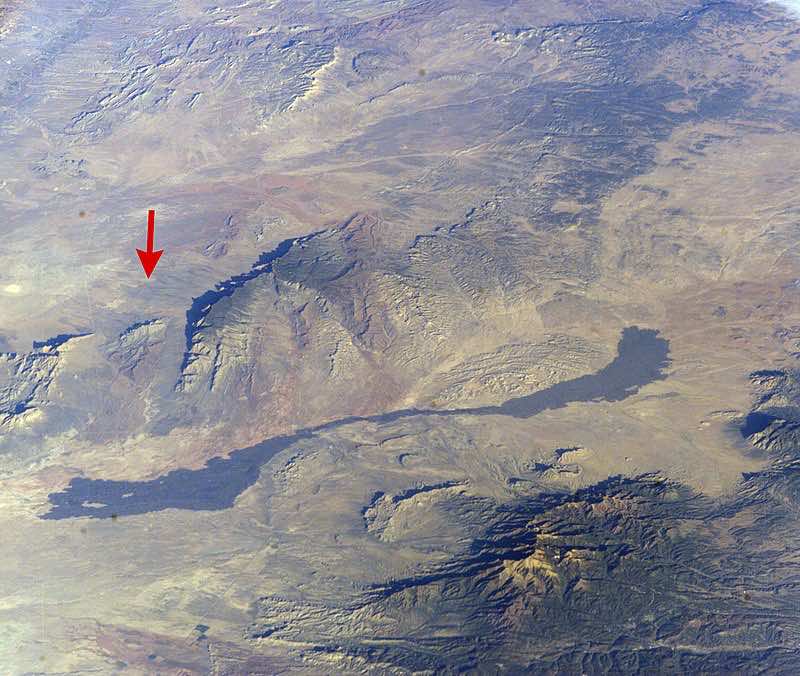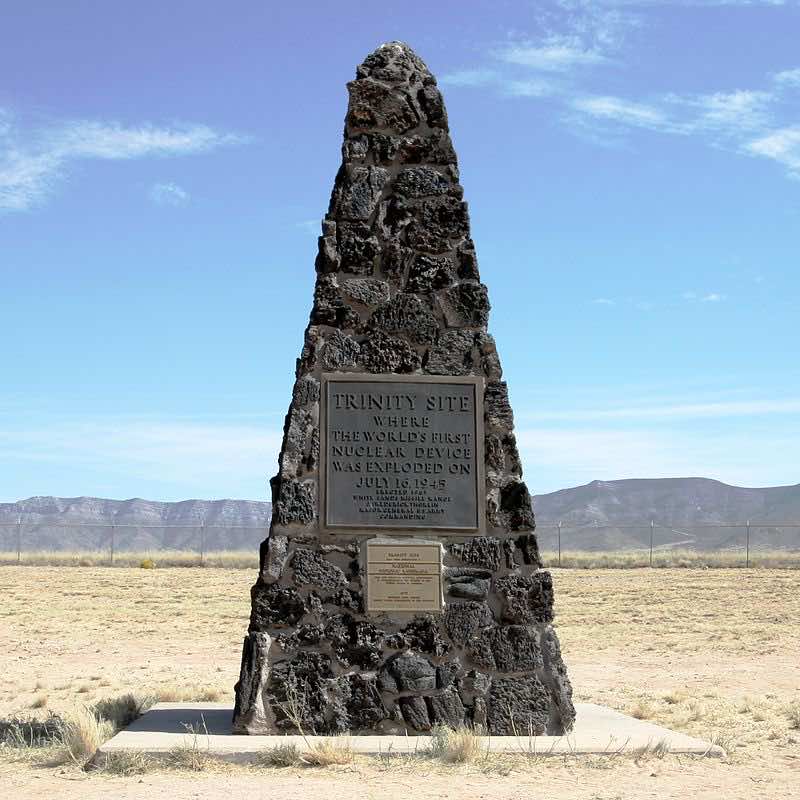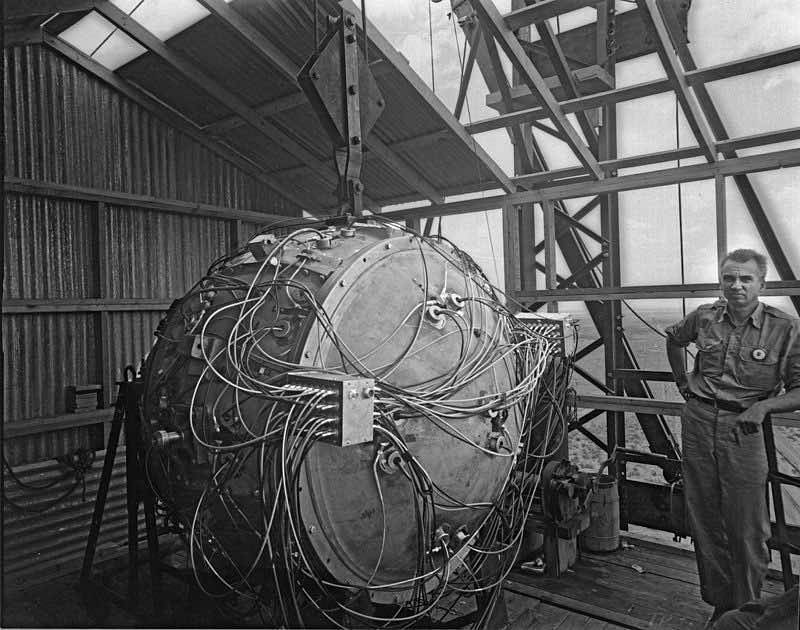On 16 July 1945, the first atomic weapon test was conduted in New Mexico, USA by th United States military’s Manhattan Project. Codenamed ‘Trinity’ the test was conducted in the Jornada del Muerto desert about 35 miles (56 km) southeast of Socorro, New Mexico, on what was then the USAAF Alamogordo Bombing and Gunnery Range, now part of White Sands Missile Range.
The code name “Trinity” was assigned by J. Robert Oppenheimer, the director of the Los Alamos Laboratory, inspired by the poetry of John Donne. The test was of an implosion-design plutonium device, informally nicknamed “The Gadget”, of the same design as the Fat Man bomb later detonated over Nagasaki, Japan, on August 9, 1945. The device yielded 19 kilotons, creating a crater over 300 metres wide.

U.S. efforts to develop nuclear weapons were driven by the fear that Nazi Germany would soon be able to do so. German chemist and Nobel Prize laureate Otto Hahn and his assistant Fritz Straßmann, helped by the Austrian-born physicist Lise Meitner, had produced the world’s first nuclear fission in late 1938. Following this discovery, Albert Einstein sent a letter to U.S. President Franklin D. Roosevelt, warning him about the threat of a German nuclear weapons programme and urging the United States to speed up its own efforts.

The nuclear device detonated at Trinity, nicknamed “Gadget,” was shaped like a large steel globe. Like the Fat Man bomb dropped on Nagasaki, it was a plutonium implosion device. Plutonium implosion devices are more efficient and powerful than gun-type uranium bombs like the Little Boy bomb detonated over Hiroshima. Plutonium implosion devices use conventional explosives around a central plutonium mass to quickly squeeze and consolidate the plutonium, increasing the pressure and density of the substance. An increased density allows the plutonium to reach its critical mass, firing neutrons and allowing the fission chain reaction to proceed. To detonate the device, the explosives were ignited, releasing a shock wave that compressed the inner plutonium and led to its explosion.
The test was conducted under extreme caution, with plans developed to evacuate nearby cities in the event of disaster, and also suffered minor delays due to weather. The final detonation took place at 5:29 AM and the roar of the shock wave took 40 seconds to reach the observers. It was felt over 100 miles (160 km) away, and the mushroom cloud reached 7.5 miles (12.1 km) in height. The atomic age had begun.



